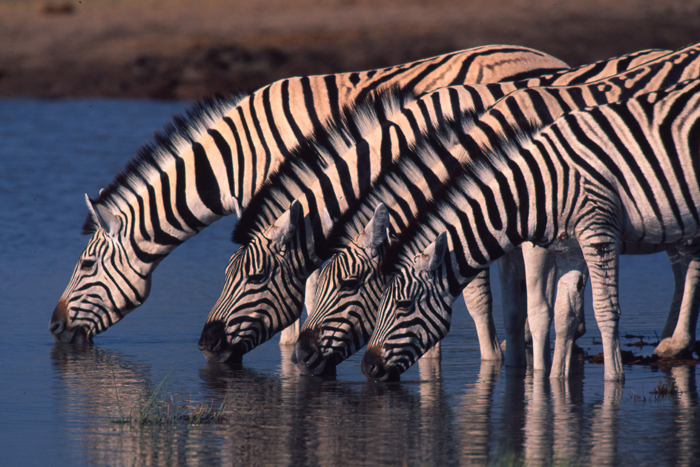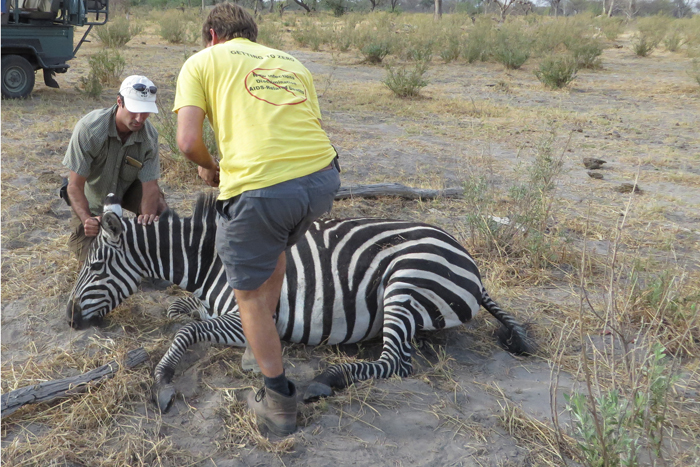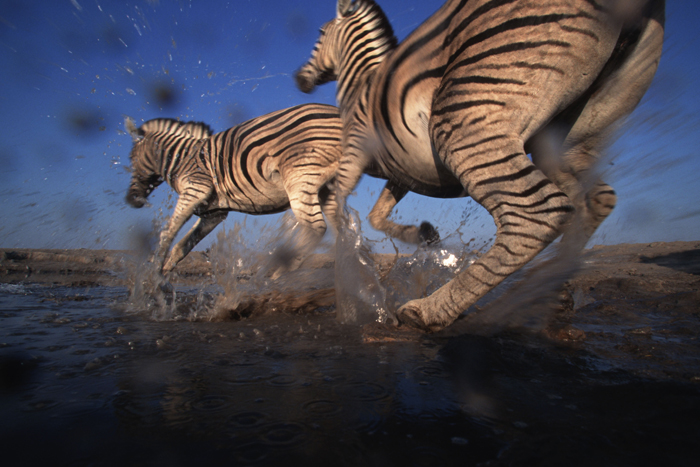
Zebras Tracked Migrating 300 Miles, a Record African Transit

Jon Hoekstra is chief scientist for the World Wildlife Fund (WWF). This article is adapted from one that first appeared on Hoekstra's WWF blog, Science Driven. He contributed this article to LiveScience's Expert Voices: Op-Ed & Insights.
Do you ever wonder what it would be like to be an explorer? To discover a natural wonder? Being a conservation biologist, I always hope I might experience that in some small way. But in our rapidly developing world, where wilderness continues to shrink, it can feel like there is nothing big left to discover.
And yet, my colleague Robin Naidoo and his collaborators in Namibia at WWF and the nation's Ministry of Environment and Tourism, and in Botswana at Elephants Without Borders, have done just that.
They have discovered the longest known land-mammal migration in Africa — a 300+ mile seasonal trek by Burchell's zebra (newly-published in this study). Adding to the surprise, this journey is not happening in the Serengeti that is so famous for massive wildlife migrations: It is happening in southern Africa, where up to several thousand zebra migrate back and forth between the Chobe River floodplains in Namibia and Nxai Pan National Park in Botswana.

The discovery seems straight out of the golden age of exploration. It's a story about modern technology and adrenaline-pumping adventure producing some good, old-fashioned field science. The key technology was GPS tracking-collars that Naidoo and colleagues used to document the movement of eight female zebra for several months through the dry and wet seasons. But first they had to get the collars onto wild zebra — no easy task! [The Real Reason Zebras Have Stripes ]
In their scientific paper about the discovery, there is a rather clinical explanation: "Adult female zebras (n=8) were darted from the air or ground and immobilized using a mixture of etorphine hydrochloride, azaperone and hyaluronidase. The age and family group size were estimated for each individual, and a satellite-tracking collar attached."

The work began when team members — including a wildlife veterinarian and one of Namibia's best chopper pilots — went swooping over the bush in a helicopter looking for a healthy female zebra. The vet would lean out to sedate the animal with a tranquilizer dart. The team would then jump out of the helicopter, put the collar on the animal, take some measurements and blood samples, and administer a drug to wake the animal back up. All the while, the team had to be on the lookout for protective and possibly dangerous family members who were not tranquilized. One kick from an angry zebra and the operation is over for you. (To glimpse this process from the researcher's point of view, check out this stunning video.)
Sign up for the Live Science daily newsletter now
Get the world’s most fascinating discoveries delivered straight to your inbox.

Once the zebra were collared, and everyone was safely back in the helicopter, technology took over the work. The GPS units recorded the precise location of each animal every five hours, and uploaded the data via satellite communications. When Naidoo plotted the data on a map upon his return from Christmas holiday in 2013, he and other wildlife biologists were stunned to see the zebras' long-distance migration route.
The team had collared the animals in October, during the dry season near the Chobe River in Namibia. The zebra stayed there until early December, when one, and then the others, started moving south. By late December, seven of the eight zebra had traveled more than 150 miles to Nxai Pan; the eighth animal arrived in early January. As more GPS data came in, Robin and colleagues could see that the zebra remained at Nxai pan for almost two months. Then, as the grass on the pan started to dry out, they headed back north to Chobe where they had started their migration.
People in Namibia have long known that zebras leave Salambala conservancy, which borders the Chobe River, at the end of the dry season — but they didn't know where the zebras went. Likewise, people knew that zebras came to Nxai Pan during the wet season but didn't know where they came from. Thanks to Naidoo and his team's adventurous and high-tech fieldwork, the dots are now connected. Researchers now know the same zebras are traveling 150 miles each way between Chobe and Nxai Pan, the longest documented land migration of any mammal in Africa.
And it turns out that this superlative is part of an even bigger one. The entire migration takes place within the boundaries of the largest multi-country conservation area in the world — the Kavango-Zambezi Transfrontier Conservation Area, commonly known as KAZA.

That 109-million-acre expanse covers five countries. It was established in 2011 by the governments of Angola, Botswana, Namibia, Zambia and Zimbabwe in recognition of the large-scale habitat needs of some of Africa's most magnificent wildlife species. [Fenced In, Animal Migrations Cannot Survive (Op-Ed )]
KAZA reflects the reality that wildlife never has, and never will, abide by the political boundaries that humans draw on maps. Today, elephants, wild dogs, wattled cranes and both black and white rhinos call KAZA home, and benefit from protection within its vast landscape.
With that in mind, the previously unknown migration is more than a cool discovery. It reminds us of the value of doing science in the field in order to explore and better understand a natural world that is still full of surprise. And it underscores the essential need for large-landscape conservation to preserve spectacular phenomena like the longest zebra migration in the world.
Hoekstra authored the popular Op-Ed "Overshoot Day: Living too Large on a Finite Planet." This article first appeared as "Big Discoveries Still Happen – Zebras Make Africa’s Longest-Known Terrestrial Wildlife Migration" on Hoekstra's WWF blog, Science Driven. Follow all of the Expert Voices issues and debates — and become part of the discussion — on Facebook, Twitter and Google +. The views expressed are those of the author and do not necessarily reflect the views of the publisher. This version of the article was originally published on Live Science.









